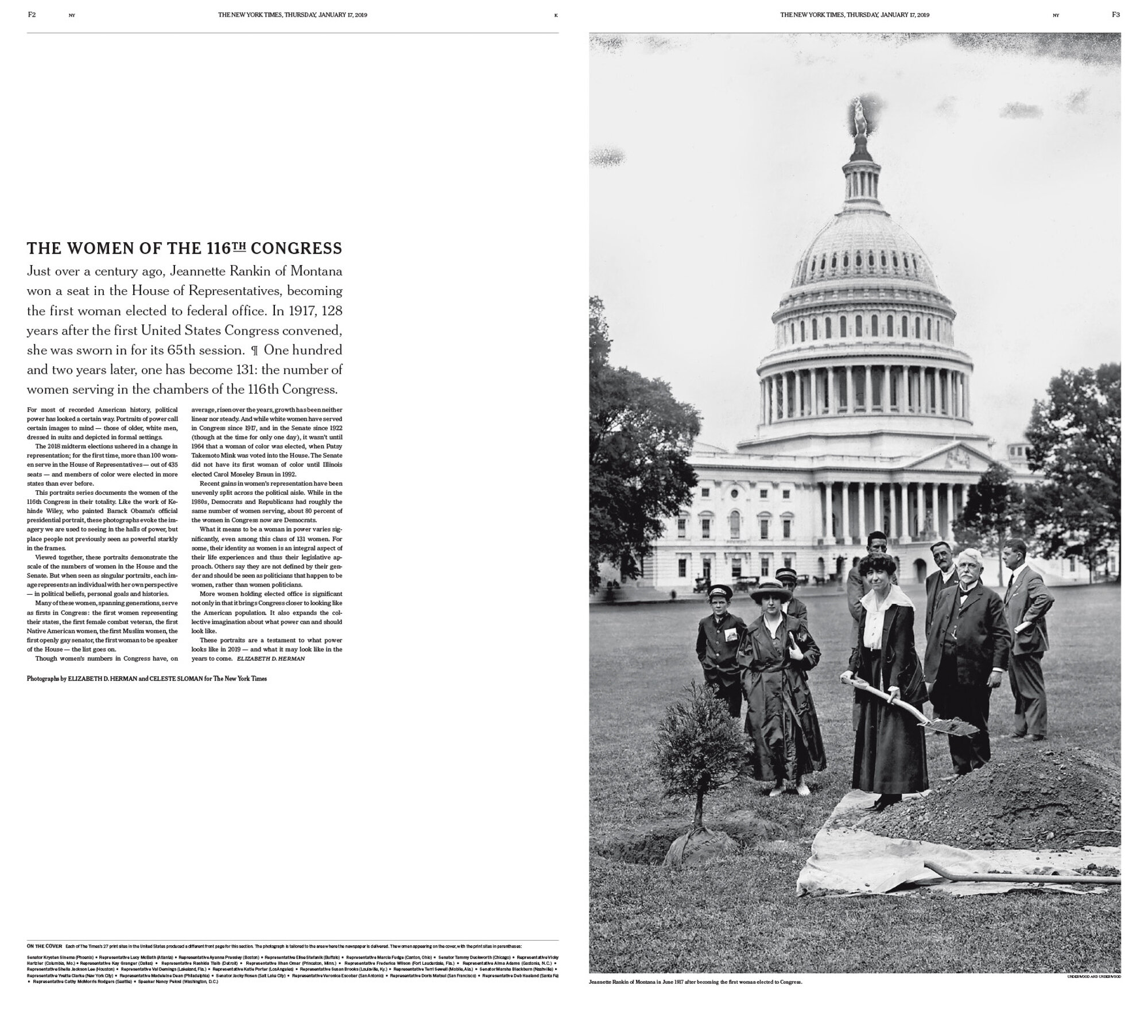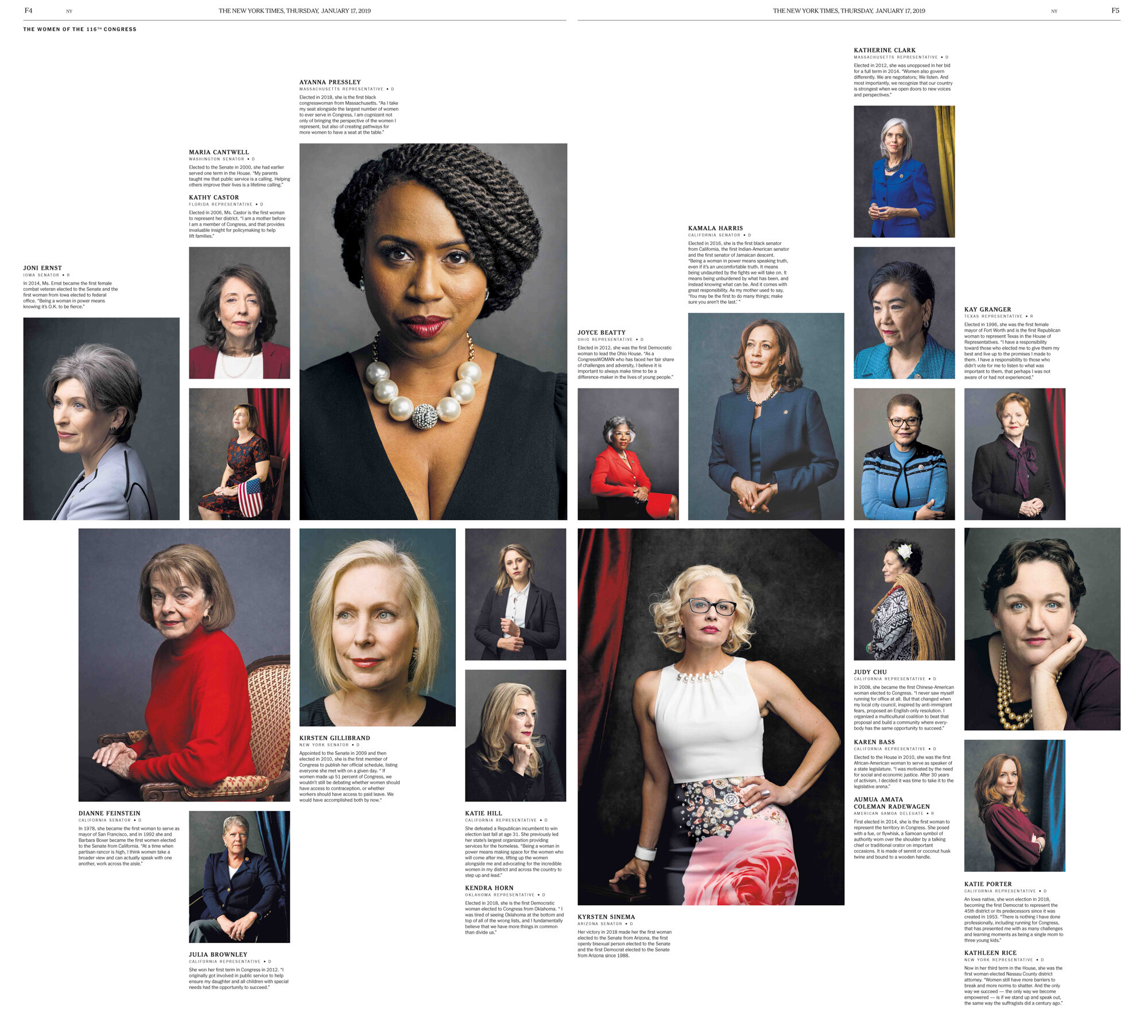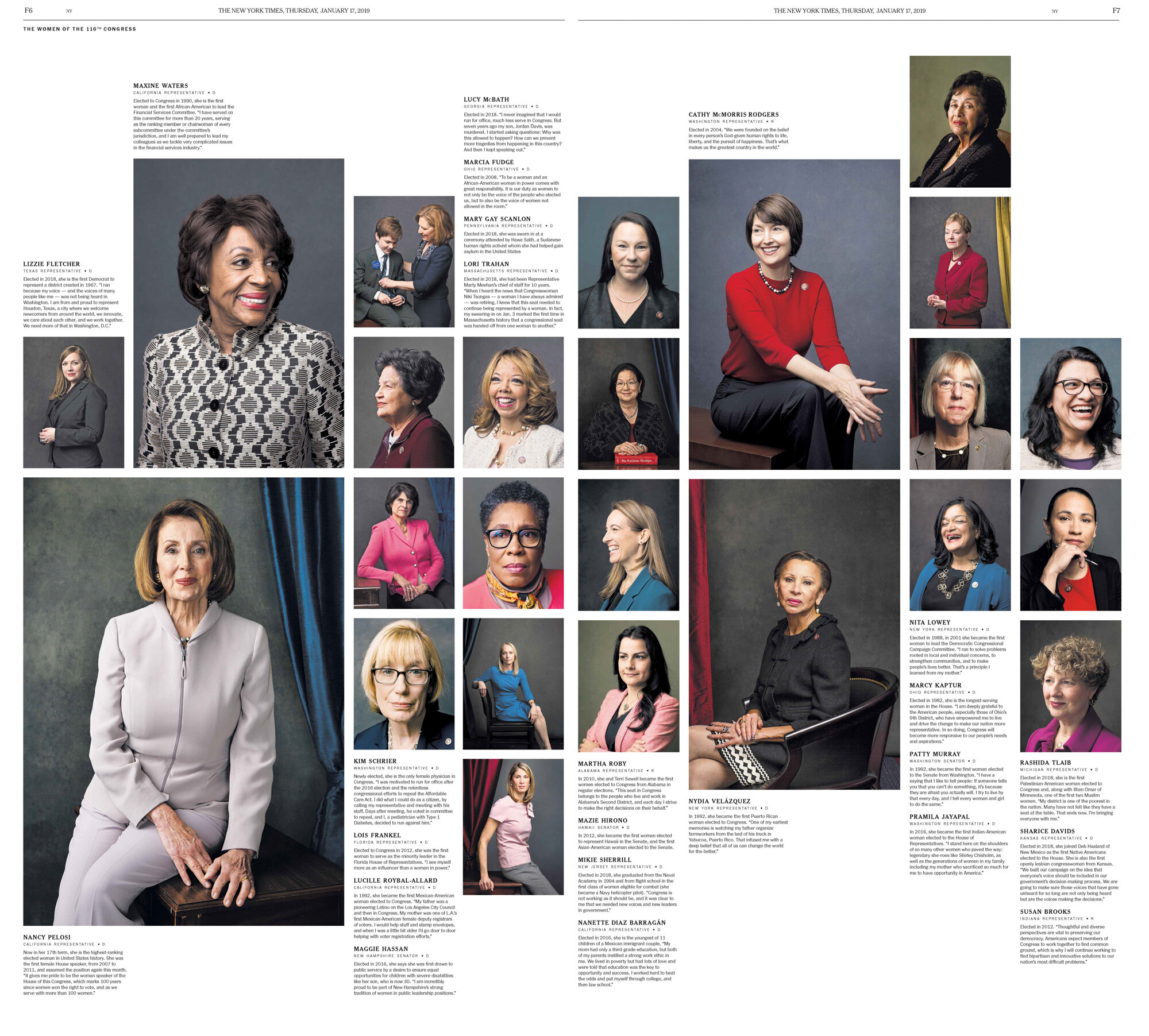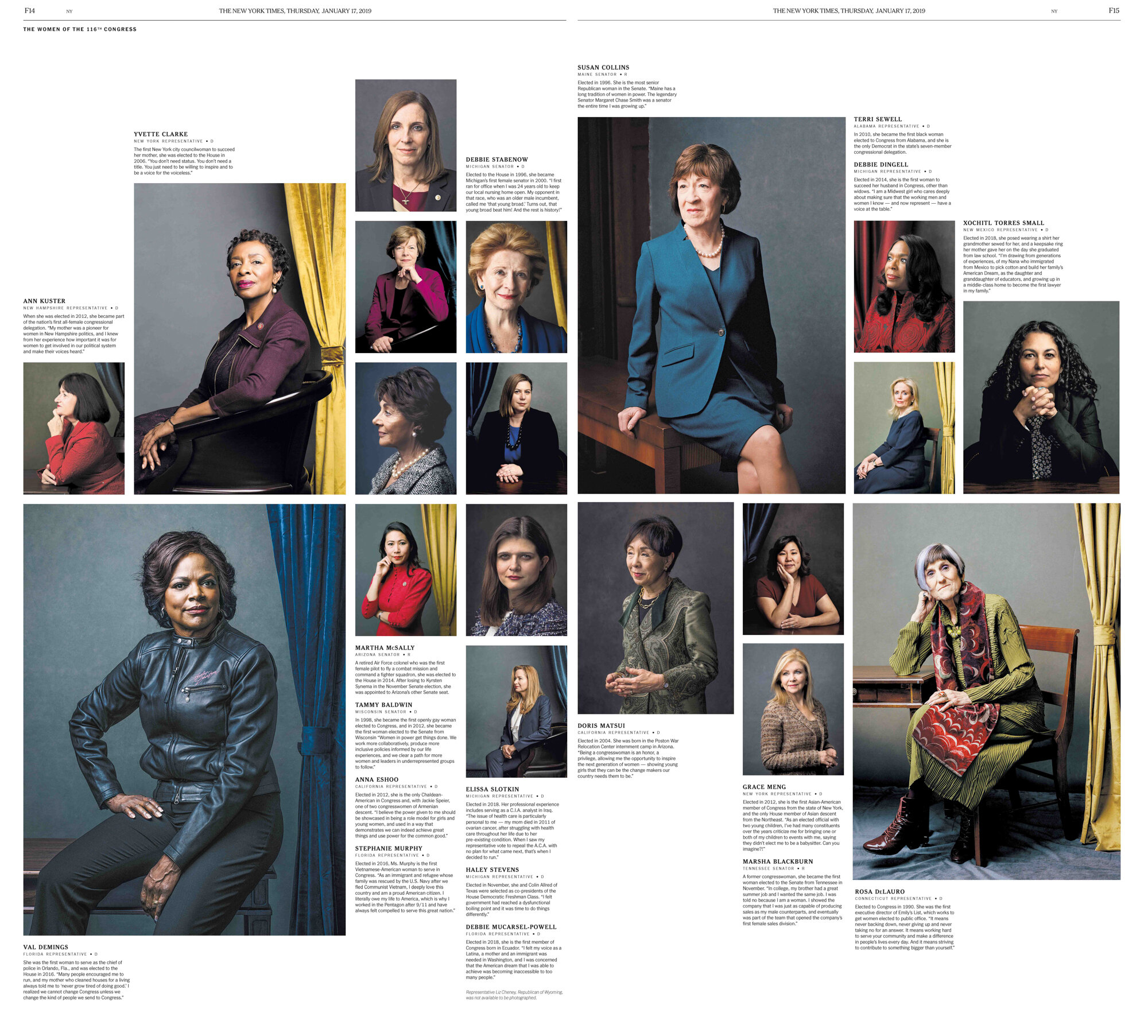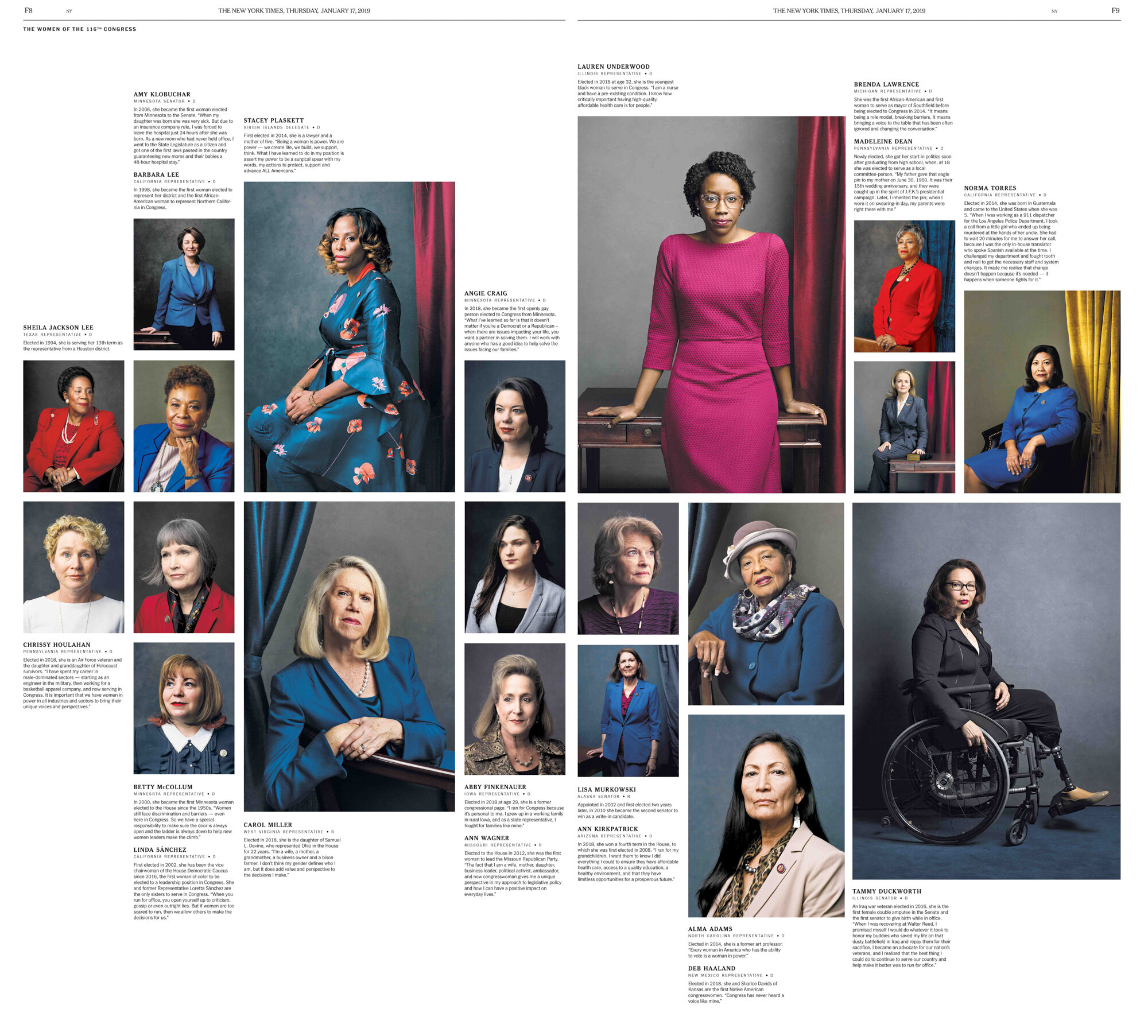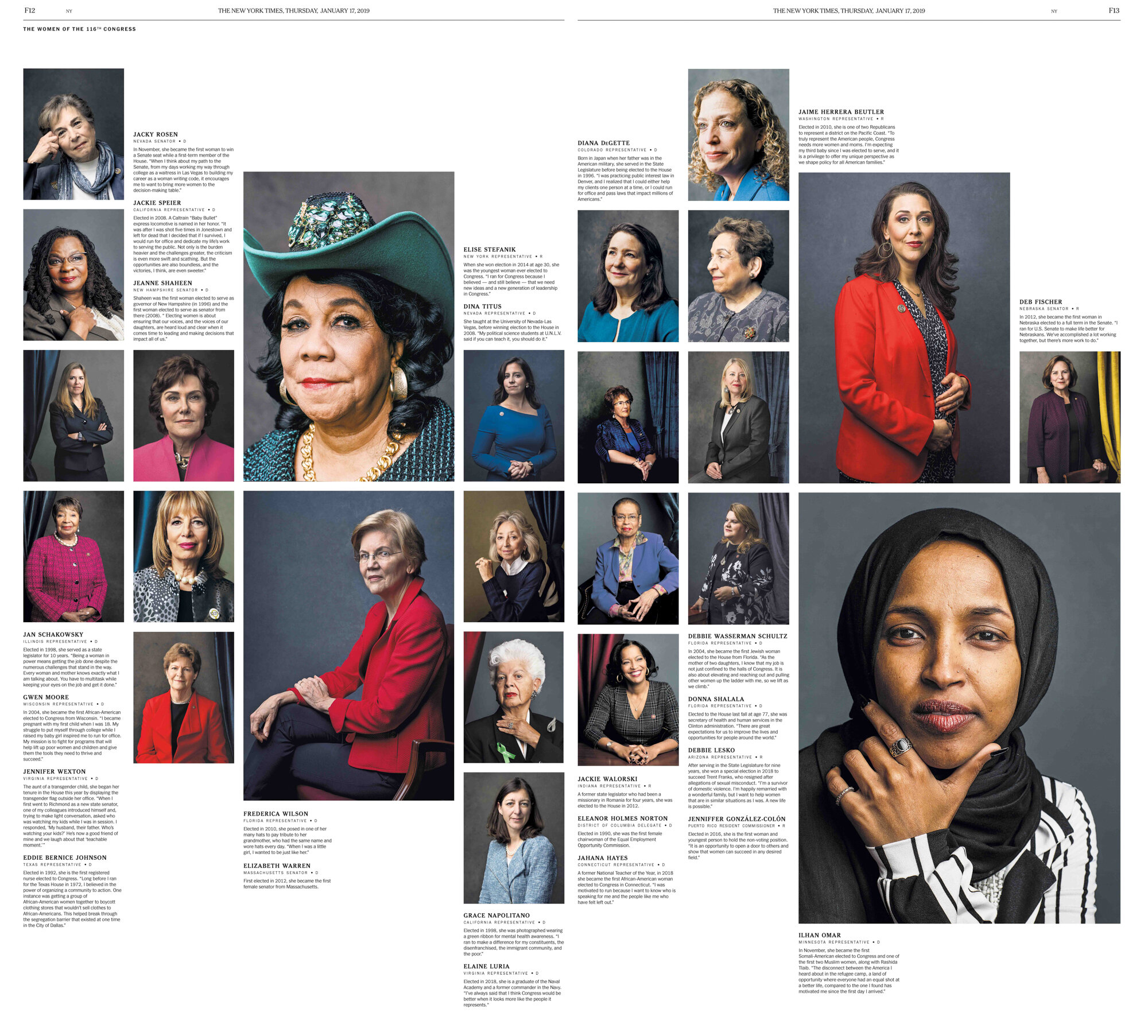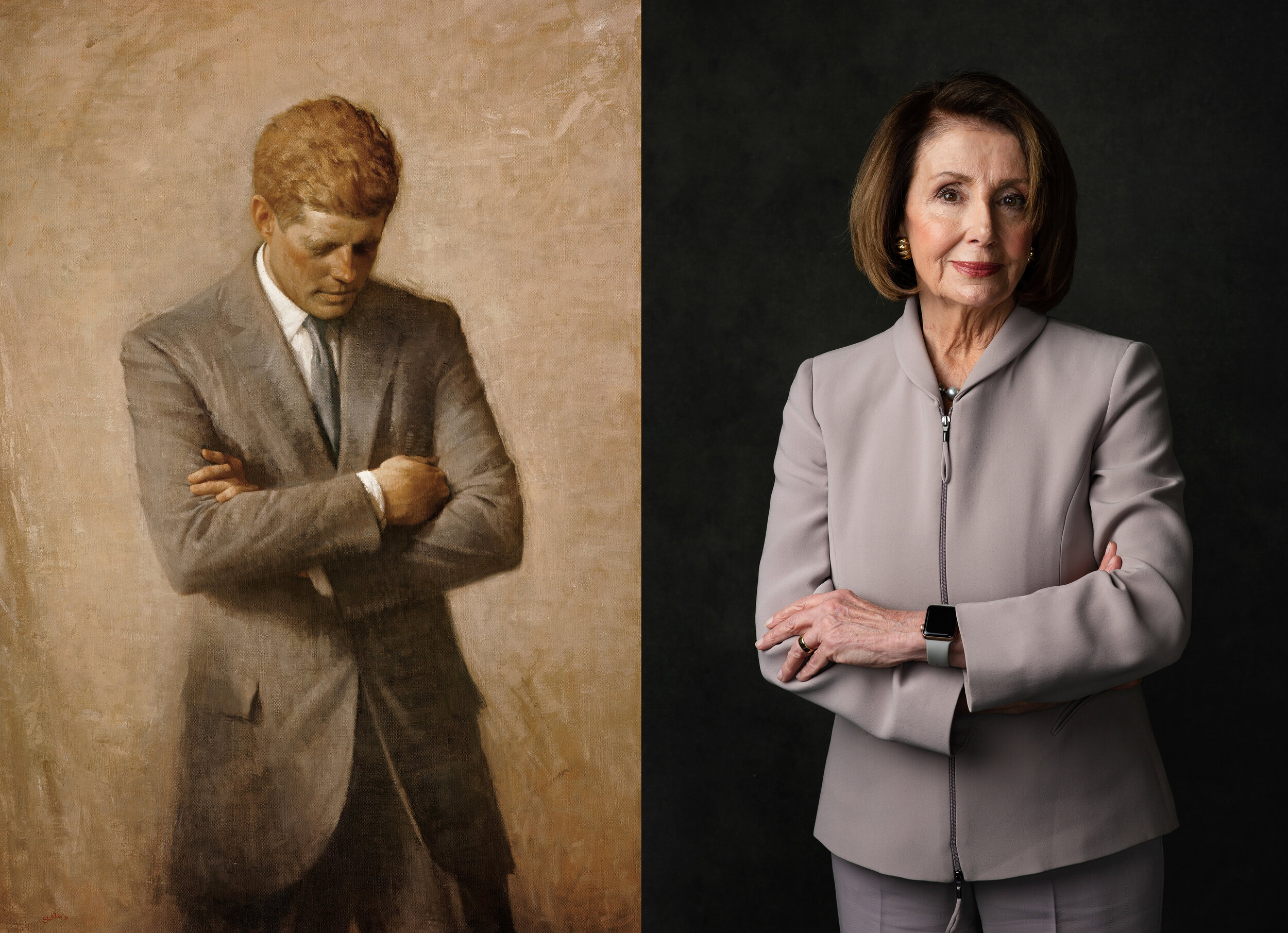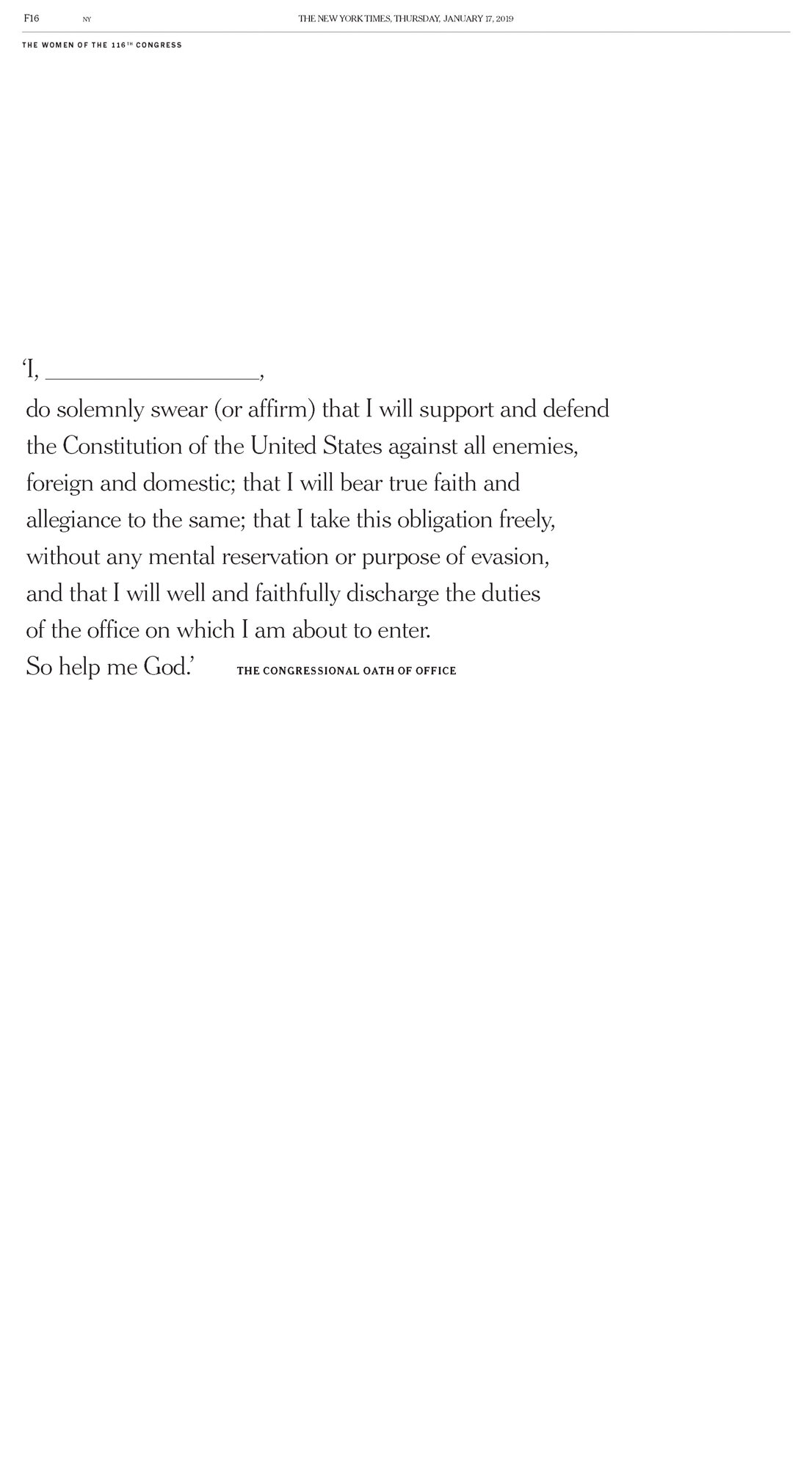The Women of the 116th Congress
A special project pitched to and co-photographed with Celeste Sloman for The New York Times, documenting all the women in the 116th Congress. Ran originally as a special section in January 2019, later published as a book in October 2019.
Just over a century ago, Jeannette Rankin of Montana won a seat in the House of Representatives, becoming the first woman ever elected to federal office. In 1917, 128 years after the first United States Congress convened, she was sworn into its 65th session.
One hundred and two years later, one has become 131 — the number of women serving in both chambers of the 116th Congress.
For most of recorded American history, political power has looked a certain way. Portraits of power call certain images to mind — those of older, white men, dressed in suits and depicted in formal settings.
The 2018 midterm elections ushered in a change in representation; for the first time, more than 100 women serve in the House of Representatives — out of 435 seats — and members of color were elected in more states than ever before.
The 27 covers that ran with the special section, with members local to the printing region featured on each.
This portrait series documents the women of the 116th Congress in their totality. Like the work of Kehinde Wiley, who painted Barack Obama’s official presidential portrait, these photographs evoke the imagery we are used to seeing in the halls of power, but place people not previously seen as powerful starkly in the frames.
Viewed together, these portraits demonstrate the scale of the number of women in both the House and Senate. But, when seen as singular portraits, each image represents an individual with her own perspective — in political beliefs, personal goals and histories.
Many of these women, spanning generations, serve as firsts in Congress: the first women representing their states, the first female combat veteran, the first Native American women, the first Muslim women, the first openly gay member of the Senate, the first woman Speaker of the House — the list goes on.
Though women’s numbers in Congress have, on average, risen over the years, growth has been neither linear nor steady. And while white women have served in Congress since 1917, and in the Senate since 1922 (though at the time only for one day), it wasn’t until 1964 that a woman of color was elected, when Patsy Takemoto Mink was voted into the House. The Senate did not have its first woman of color until Illinois elected Carol Moseley Braun in 1992.
Recent gains in women’s representation have been unevenly split across the political aisle. While in the 1980s, Democrats and Republicans had roughly the same number of women serving, about 80 percent of the women in Congress now are Democrats.
What it means to be a woman in power varies significantly, even among this class of 131 women. For some, their identity as women is an integral aspect of their life experiences and thus their legislative approach. Others say they are not defined by their gender and should be seen as politicians that happen to be women, rather than women politicians.
More women holding elected office is significant not only in that it brings Congress closer to looking like the American population. It also expands the collective imagination about what power can and should look like.
Portraits of these women of the 116th Congress are a testament to what power looks like in 2019 — and the possibilities of what it may look like in the years to come.
Click through to see tearsheets of the special section below.
